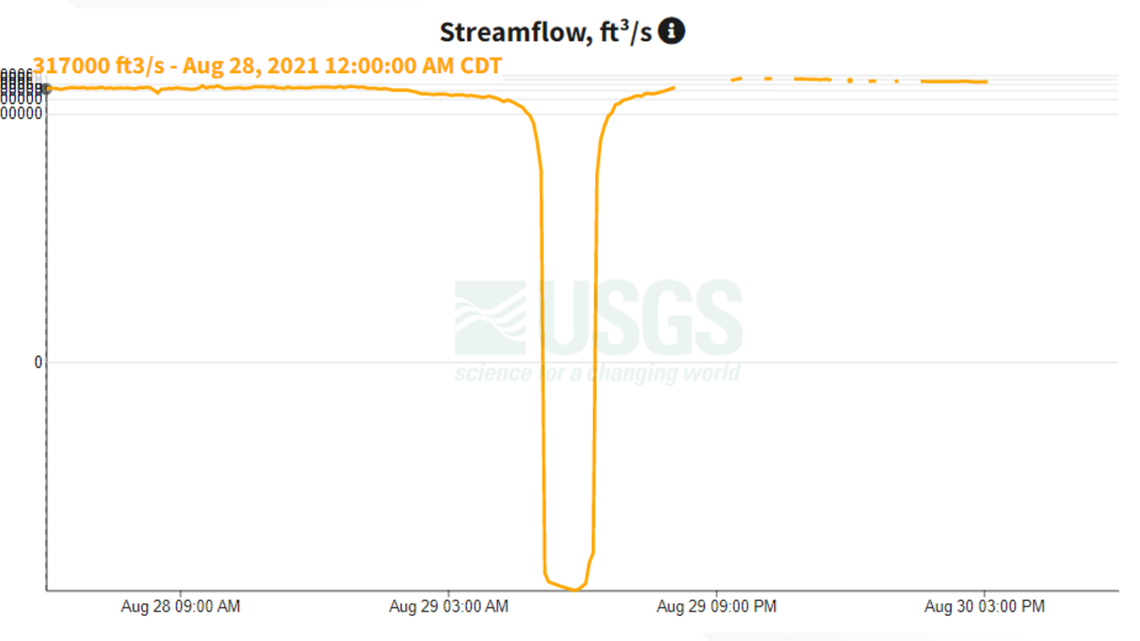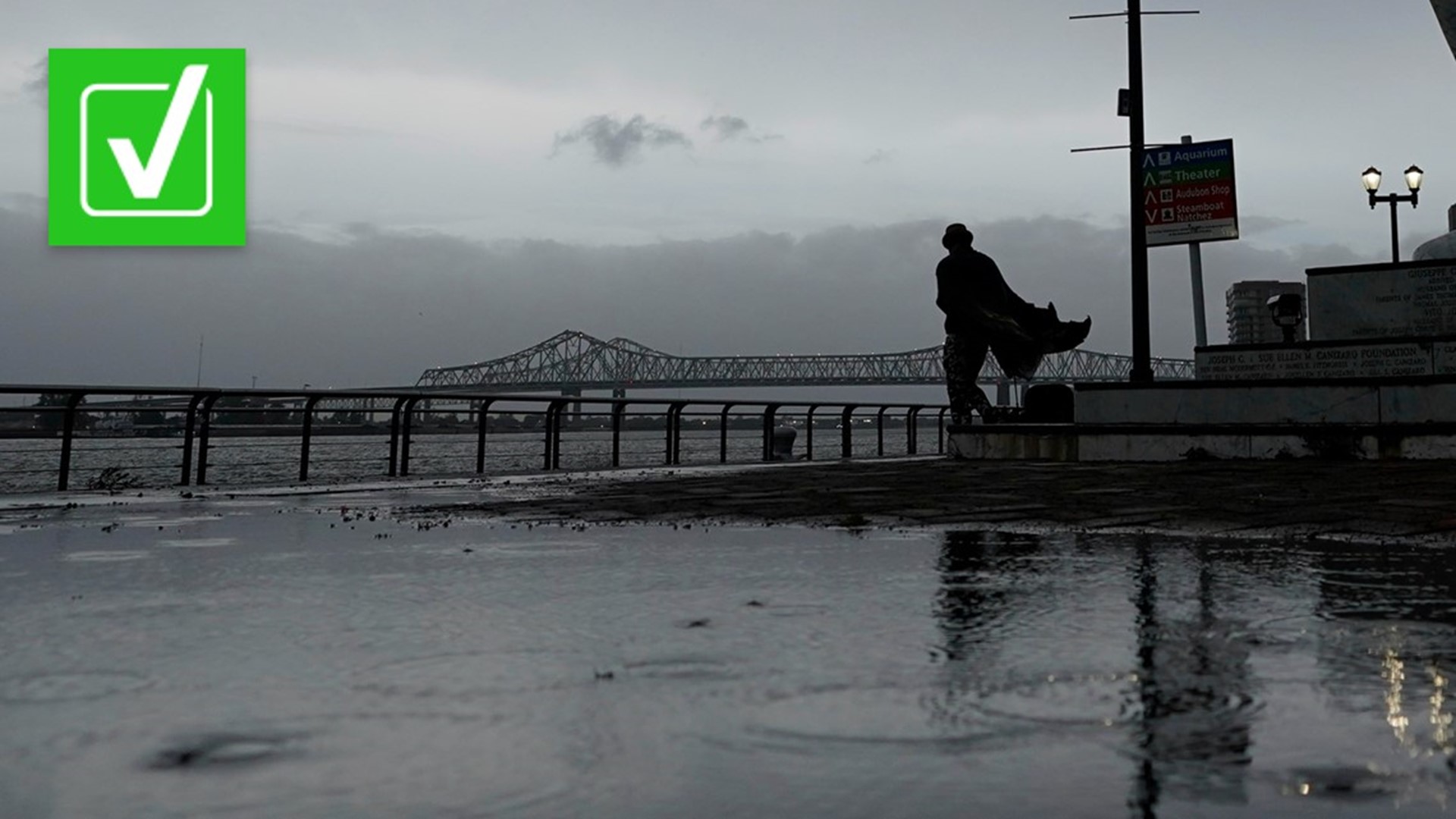Hurricane Ida made landfall in Louisiana on Aug. 29, 2021, exactly 16 years after Hurricane Katrina devastated the area.
Ida, a Category 4 hurricane, had maximum sustained winds of about 150 mph when it made landfall, according to the National Hurricane Center. The storm was so powerful that some people on social media said it caused the flow of the Mississippi River to reverse.
THE QUESTION
Did Hurricane Ida reverse the flow of part of the Mississippi River?
THE SOURCES
- U.S. Geological Survey (USGS)
- Tim Pandajis, meteorologist at KHOU
THE ANSWER
Yes, Hurricane Ida temporarily reversed the flow of part of the Mississippi River for a few hours.
WHAT WE FOUND
The Mississippi River typically flows south into the Gulf of Mexico, and that flow is tracked by U.S. Geological Survey (USGS) river gauges. Streamflow, which is also known as discharge, measures how much water is flowing past a point at a given time, according to the USGS.
One gauge at Belle Chasse, Louisiana, south of New Orleans, detected the flow of the river was negative – meaning the flow of the river reversed. It was first detected on the morning of Aug. 29.


Tim Pandajis, a meteorologist for the TV station KHOU in Houston, Texas, said the change of river flow is due to the powerful winds brought by Hurricane Ida.
“So, as winds blow onshore for a persistent amount of time, they’re going to push that water inland, and it’s going to move into channels like the Mississippi River,” Pandajis told VERIFY.
Ida isn’t the first hurricane that has caused the temporary reverse flow of the Mississippi River in that area, according to Pandajis. He said Hurricane Isaac in 2012 and Hurricane Katrina in 2005 had the same effect.
“It doesn’t last long,” Pandajis said. “But it’s enough that those winds are so persistent that they push that water farther inland and you can detect that change in flow.”
According to the USGS gauge at Belle Chasse, the reverse flow of the Mississippi River took place for a few hours – from about 9:30 a.m. to 1 p.m. on Aug. 29.
The gauge also showed the river – which is typically between 8 and 10 feet – rose to nearly 17 feet on Aug. 29.












